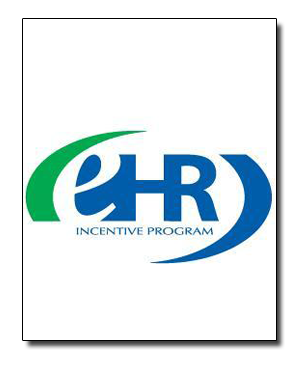Meaningful use describes the use of health information technology (HIT) that leads to improvements in healthcare and furthers the goals of information exchange among health care professionals. The meaningful use rule is part of a coordinated set of regulations to help create a private and secure 21st-century electronic health information system. To become “Meaningful Users” providers need to demonstrate they're using certified EHR technology in ways that can be measured quantitatively and qualitatively.
The American Recovery and Reinvestment Act of 2009 specify three main components of Meaningful Use:
- The use of a certified EHR in a meaningful manner, such as e-prescribing.
- The use of certified EHR technology for electronic exchange of health information to improve quality of health care.
- The use of certified EHR technology to submit clinical quality and other measures.
The meaningful use of EHRs specified by the American Recovery and Reinvestment Act of 2009 is categorized as follows:
- Improve care coordination
- Reduce healthcare disparities
- Engage patients and their families
- Improve population and public health
- Ensure adequate privacy and security
The Obama Administration’s Health IT program intends to use federal investments to stimulate the market of electronic health records:
- Incentives: to providers who use approved EHRs
- Strict and open standards: To ensure users and sellers of EHRs work towards the same goal
- Certification of software: To provide assurance that the EHRs meet basic quality, safety, and efficiency standards
The detailed definition of “meaningful use” is to be rolled out in 3 stages over a period of time until 2015. Details of each stage are hotly debated by various groups. Only stage 1 has been defined while the remaining stages will evolve over time.
Meaningful Use Stage 1
The first step in achieving meaningful use is to have a certified electronic health record (EHR) and to demonstrate that it is being used to meet the requirements. Stage 1 contains 25 objectives/measures for Eligible Providers (EPs) and 24 objectives/measures for eligible hospitals. The objectives/measures have been divided into a core set and menu set. EPs and eligible hospitals must meet all objectives/measures in the core set (15 for EPs and 14 for eligible hospitals). EPs must meet 5 of the 10 menu-set items during Stage 1.
Full list of the Core Requirements and a full list of the Menu Requirements.
Core Requirements:
- Use computerized order entry for medication orders.
- Implement drug-drug, drug-allergy checks.
- Generate and transmit permissible prescriptions electronically.
- Record demographics.
- Maintain an up-to-date problem list of current and active diagnoses.
- Maintain active medication list.
- Maintain active medication allergy list.
- Record and chart changes in vital signs.
- Record smoking status for patients 13 years old or older.
- Implement one clinical decision support rule.
- Report ambulatory quality measures to CMS or the States.
- Provide patients with an electronic copy of their health information upon request.
- Provide clinical summaries to patients for each office visit.
- Capability to exchange key clinical information electronically among providers and patient authorized entities.
- Protect electronic health information (privacy & security)
Menu Requirements:
- Implement drug-formulary checks.
- Incorporate clinical lab-test results into certified EHR as structured data.
- Generate lists of patients by specific conditions to use for quality improvement, reduction of disparities, research, and outreach.
- Send reminders to patients per patient preference for preventive/ follow-up care
- Provide patients with timely electronic access to their health information (including lab results, problem list, medication lists, allergies)
- Use certified EHR to identify patient-specific education resources and provide to patient if appropriate.
- Perform medication reconciliation as relevant
- Provide summary care record for transitions in care or referrals.
- Capability to submit electronic data to immunization registries and actual submission.
- Capability to provide electronic syndromic surveillance data to public health agencies and actual transmission.
Clearly, the “Meaningful Use Stage I” requirements are designated to show the functionality of an EHR. It appears that the intent is to demonstrate the more complex elements of Meaningful Use with subsequent stages.
More about Meaningful Use...

